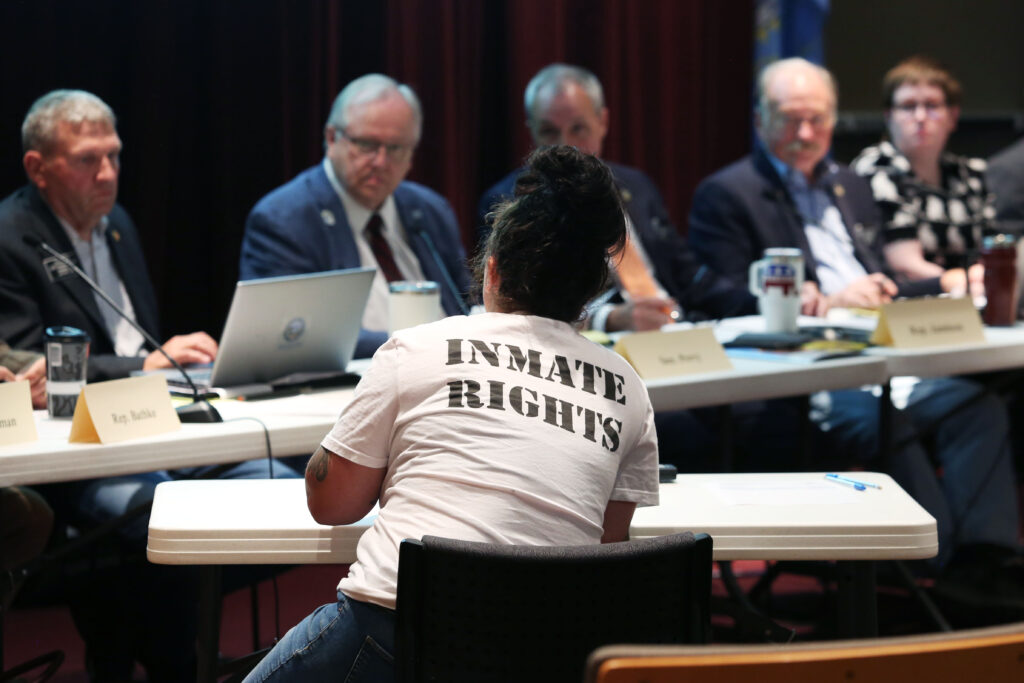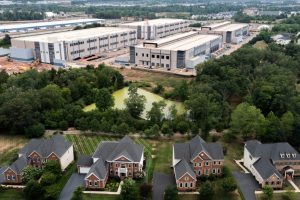Linsey Sapp, who wears an “Inmate Rights” shirt and whose husband is incarcerated, speaks to lawmakers at an Initial Incarceration, Reentry Analysis, and Comparison of Relevant States Interim Committee meeting in Sioux Falls on June 24, 2025. (Makenzie Huber/South Dakota Searchlight)
SIOUX FALLS — The overrepresentation of Native Americans in state prisons, a lack of rehabilitation programming, and a need for more intervention to keep people out of prison are the biggest issues flagged by members of South Dakota’s legislative recidivism and rehabilitation committee.
The group held its first meeting Monday at the University of South Dakota’s Sioux Falls campus. The committee is tasked with analyzing the makeup of the prison population, comparing incarceration rates and sentencing laws in similar states, and identifying barriers to inmates’ reintegration into society.
South Dakota has the nation’s 15th-highest incarceration rate, according to The Sentencing Project. Forty-three percent of adult offenders in South Dakota return to prison within three years of release, according to 2023 statistics from the state Department of Corrections.
Some lawmakers who voted in February against funding to build an $825 million men’s prison said the state should be investing more into rehabilitation programs to reduce its prison population.
Lawmakers on the recidivism and rehabilitation committee may propose bills and funding recommendations during the next legislative session. Some members of the committee also sit on the governor’s Project Prison Reset committee, which is searching for a location to build a new prison at a cost up to $600 million.
Mitchell Republican Rep. Jeff Bathke is the former director of substance abuse programs for the state Department of Corrections and a member of the recidivism and rehabilitation committee. He hopes the group will dig further into rehabilitation and behavioral health programming to understand existing programs and their efficacy.
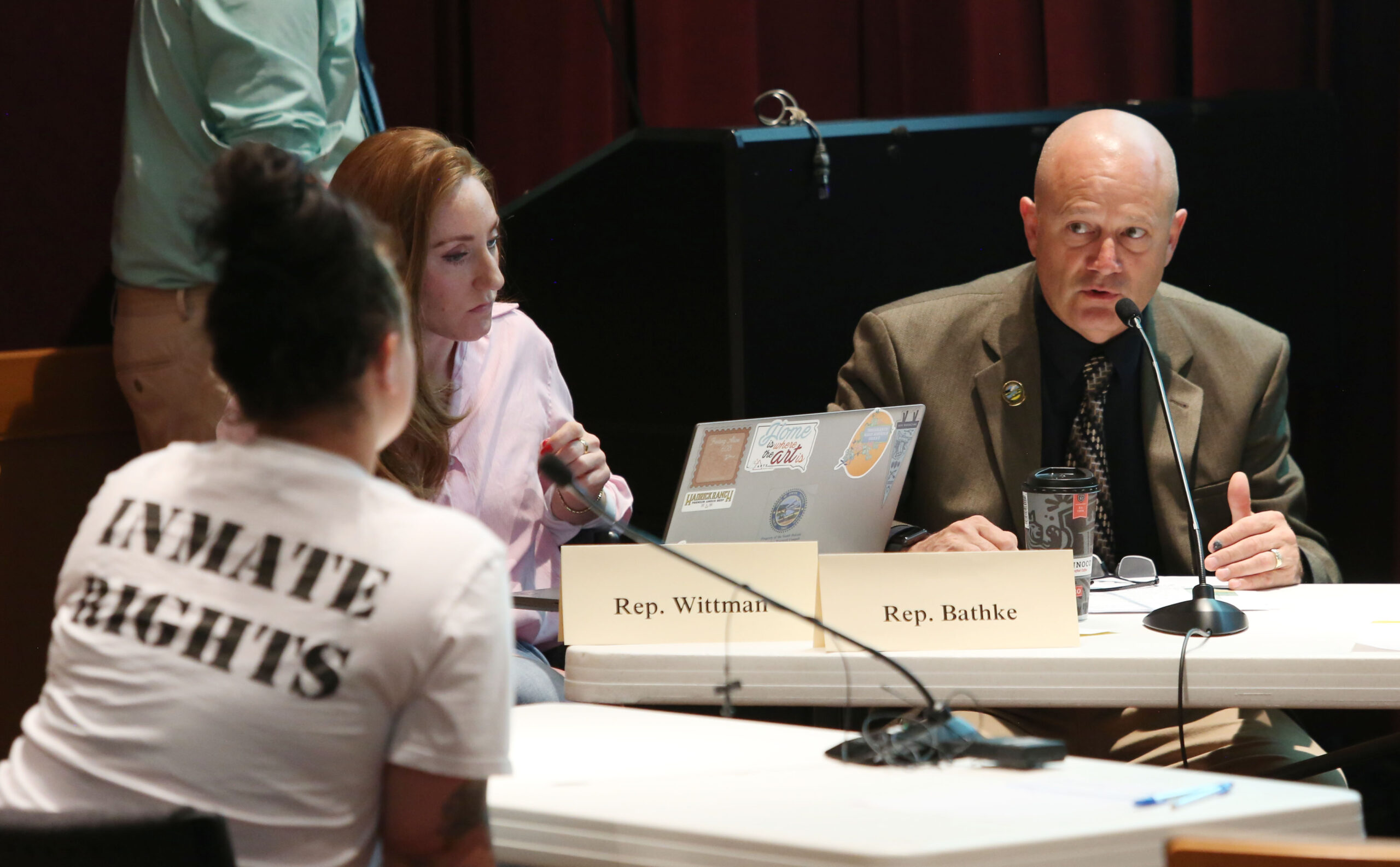
“Right now, we’re just a warehouse. We warehouse people,” Bathke told South Dakota Searchlight after the meeting. “Then they come back because we did nothing as a community to help them.”
The first meeting supported his belief that the state should hire a consultant to better evaluate the prison system and make recommendations to policy and programming. The state has hired a consultant to study prison construction needs, and that consultant said strict sentencing laws are among the factors driving prison population growth.
“This is a severely damaged system,” Bathke said. “But it can be great. It can be the best program in the nation, with some changes.”
Indigenous overrepresentation
Native Americans account for nearly 40% of the state’s prison inmates. They account for about 9% of the state’s overall population, according to a presentation from the Legislative Research Council.
That statistic is “alarming,” said Rep. Kadyn Wittman, D-Sioux Falls, during the meeting. Sioux Falls Republican Rep. Greg Jamison, who co-chairs the committee, told lawmakers he believes the overrepresentation is one of the “biggest issues” facing the committee.
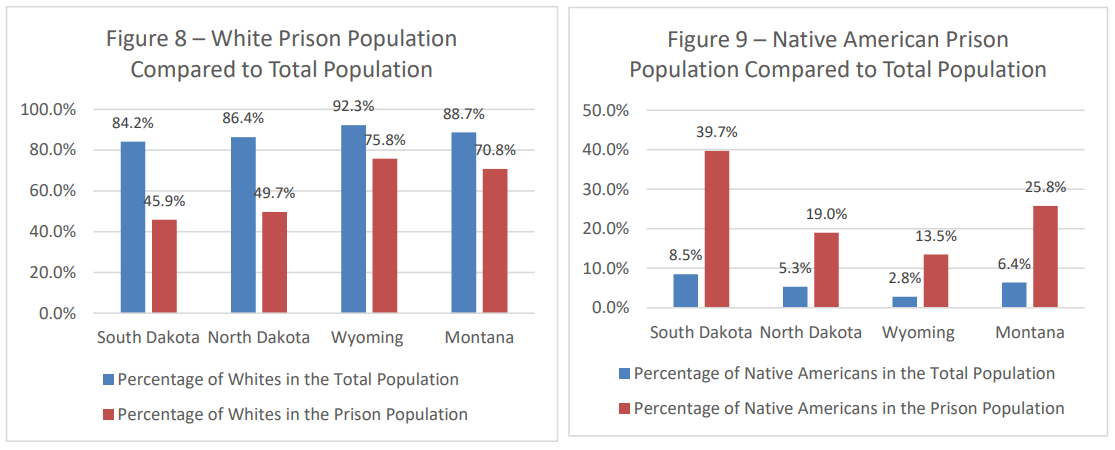
The disparity of Native Americans in the prison system has persisted for decades. Bathke added that offenders sentenced in federal court after crimes on tribal land aren’t accounted for in the state data.
“It is way worse than what these numbers actually show,” Bathke said.

South Dakota’s disparity is higher than similar states analyzed by the committee: Montana, North Dakota and Wyoming. Legislative staff compared the states’ prison populations because they share economic and demographic similarities.
Jamison said he hopes to connect with tribal leaders this summer to hear their suggestions for addressing the problem.
South Dakota also has the third highest female incarceration rate in the nation, according to The Sentencing Project. Nearly two-thirds of incarcerated women in the state are Native American, and about half of their worst offenses are drug-related.
North Dakota has the lowest prison population in the four-state comparison presented to the committee, at under 2,000 inmates, along with the lowest incarceration rate and lowest female incarceration rate.
“We’re going to have to dig into North Dakota a bit,” Jamison said.
‘Rehabilitation is important, and we are failing’
Several lawmakers and members of the public raised concerns about rehabilitation programming — both the quality of programs and the number of programs available to inmates. A Department of Corrections employee was not on hand to answer lawmaker questions.
Leaders of a company that trained and employed maximum security inmates at the state penitentiary for two decades said they were pushed out of the prison system by administrators last year, although administrators said the company left voluntarily to avoid adhering to newer, stricter security protocols. Gov. Larry Rhoden announced this week his administration will use economic development dollars from the state’s Future Fund to start a diesel mechanic training program in the metal shop’s former space.
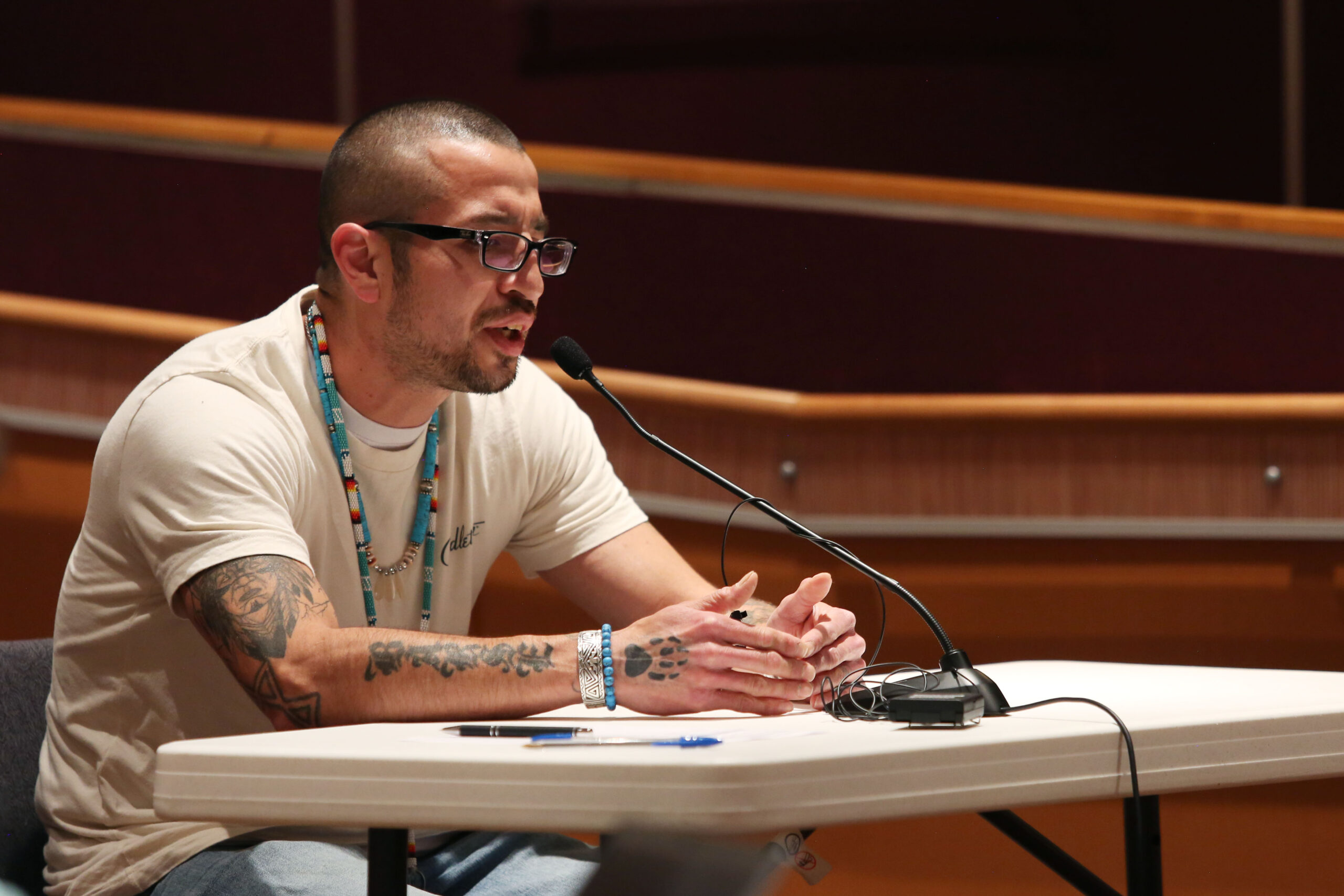
Linsey Sapp, whose husband is incarcerated, told lawmakers during public comment that the lack of classes and programming is a serious concern, especially if inmates are spending “23 hours a day” in their cells.
“Rehabilitation is important, and we are failing,” she said.
Tracii Barse, a Native American business owner who introduced himself as a seven-time felon to lawmakers, said mentorship during and after a prison sentence is necessary to successfully reintegrate inmates into society.
He suggested policy changes to allow ex-inmates to come into the prison to teach classes or mentor current inmates. While there are several volunteers who mentor, former prisoners better understand inmates’ history and challenges, he said.
Barse finds it ironic that he’s allowed to enter a school to mentor children, despite his background, but he can’t use that same experience and connection to help inmates.
Intervention and understanding reoffending
Sen. Tamara Grove, R-Lower Brule, encouraged lawmakers on the committee to explore the path that leads a person to prison and reasons why people reoffend. In better understanding those areas, the state can intervene, deter and help people while they’re in their home, she added.

Doing so would be cheaper, healthier, and keep a community intact — especially given the number of Native Americans removed from their communities due to incarceration, Grove said.
Grove, along with Sen. Kevin Jensen, R-Canton, discussed the possibility of removing a person’s felony conviction from their record for certain crimes after an amount of time or after rehabilitation, to help with reintegration and recidivism. Felons are not allowed to live in certain neighborhoods, can’t have some jobs and can’t own a gun.
“I think, at some point, it has to be where the person has paid for their crime and they move back to wholeness in whatever way that looks,” Grove said. “I think that’s a really big part of re-entry.”
The committee’s next meeting will be held in July in the Rapid City area.
GET THE MORNING HEADLINES.



